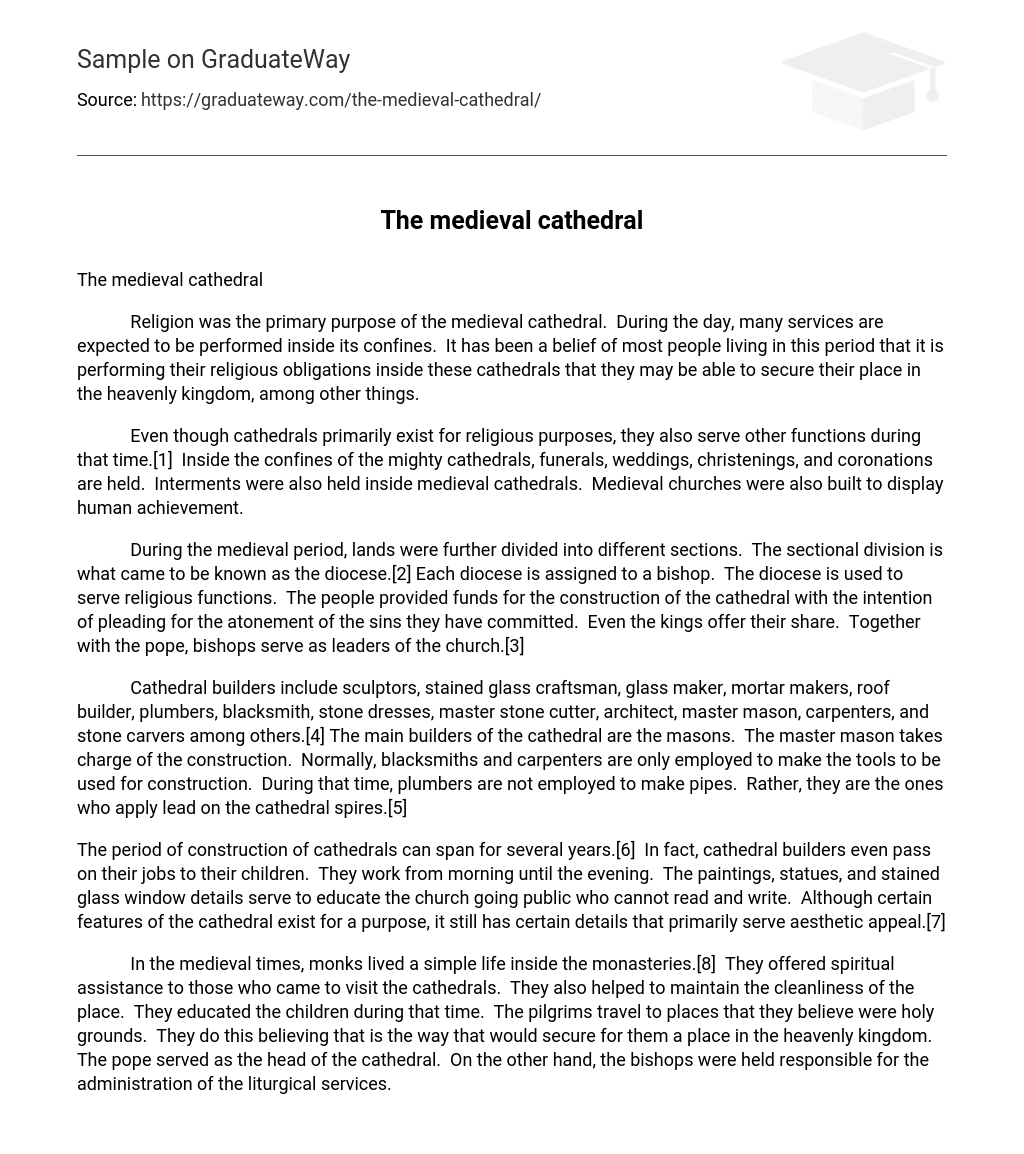Religion was the primary purpose of the medieval cathedral. During the day, many services are expected to be performed inside its confines. It has been a belief of most people living in this period that it is performing their religious obligations inside these cathedrals that they may be able to secure their place in the heavenly kingdom, among other things.
Even though cathedrals primarily exist for religious purposes, they also serve other functions during that time.[1] Inside the confines of the mighty cathedrals, funerals, weddings, christenings, and coronations are held. Interments were also held inside medieval cathedrals. Medieval churches were also built to display human achievement.
During the medieval period, lands were further divided into different sections. The sectional division is what came to be known as the diocese.[2] Each diocese is assigned to a bishop. The diocese is used to serve religious functions. The people provided funds for the construction of the cathedral with the intention of pleading for the atonement of the sins they have committed. Even the kings offer their share. Together with the pope, bishops serve as leaders of the church.[3]
Cathedral builders include sculptors, stained glass craftsman, glass maker, mortar makers, roof builder, plumbers, blacksmith, stone dresses, master stone cutter, architect, master mason, carpenters, and stone carvers among others.[4] The main builders of the cathedral are the masons. The master mason takes charge of the construction. Normally, blacksmiths and carpenters are only employed to make the tools to be used for construction. During that time, plumbers are not employed to make pipes. Rather, they are the ones who apply lead on the cathedral spires.[5]
The period of construction of cathedrals can span for several years.[6] In fact, cathedral builders even pass on their jobs to their children. They work from morning until the evening. The paintings, statues, and stained glass window details serve to educate the church going public who cannot read and write. Although certain features of the cathedral exist for a purpose, it still has certain details that primarily serve aesthetic appeal.[7]
In the medieval times, monks lived a simple life inside the monasteries.[8] They offered spiritual assistance to those who came to visit the cathedrals. They also helped to maintain the cleanliness of the place. They educated the children during that time. The pilgrims travel to places that they believe were holy grounds. They do this believing that is the way that would secure for them a place in the heavenly kingdom. The pope served as the head of the cathedral. On the other hand, the bishops were held responsible for the administration of the liturgical services. The bishop was adorned by fancy clothing. He was seen holding a crosier, a staff symbolical of the faithful people being led by him as their shepherd.[9]
Indeed, medieval cathedrals form an integral part of society during the middle ages. The sight of a cathedral generates feelings of humility, inspiration, and admiration to a person. These words just hint at the powerful responses evoked by the great Gothic cathedrals of Europe. The visionaries who dreamed them command our admiration and respect, and the audacity of those who actually built them elicits disbelief.
2
BIBLIOGRAPHY
Scott, Robert A. The Gothic Enterprise: A Guide to Understanding the Medieval Cathedral.
Berkeley: University of California Press, 2006.
[1] Robert A. Scott, The Gothic Enterprise: A Guide to Understanding the Medieval Cathedral (Berkeley: University of California Press, 2006), 253.
[2] Ibid, page 7.
[3] Ibid, page 68.
[4] Ibid, page 23.
[5] Ibid, page 26.
[6] Ibid, page 7.
[7] Ibid, page 123.
[8] Ibid, page 70.
[9] Ibid, page 285.





